Malone
The Rev. Ashbel Parmelee was the leading abolitionist in Malone. He was the pastor of the First Congregational Church, a documented site on the New York Underground Railroad Heritage Trail, where anti-slavery meetings were held and where it is believed fugitive slaves were secreted in the basement.
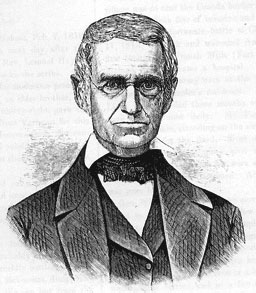
Rev. Ashbel Parmelee
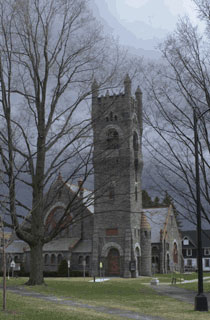
First Congregational Church of Malone, in its
basement is a tunnel system retained from the
church building it replaced. The tunnels may
have been used to secret fugitive slaves.
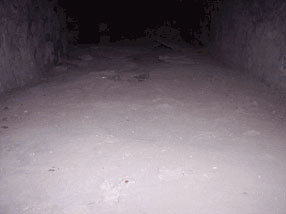
A section of the tunnel system in basement of
First Congregational Church of Malone
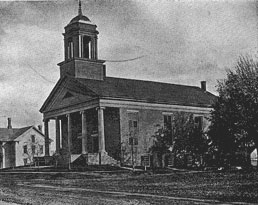
1852 Congregational Church building, a door on the
side of the church may have been used to provide
runaway slaves with access to the tunnel which would
have led them to a secret room under the portico.
Outside of Malone, two prominent citizens are known to have sheltered fugitive slaves before taking them into Canada.
Major Dimick, an "extreme militant" abolitionist, sheltered runaways in his home on the road between Malone and Fort Covington.
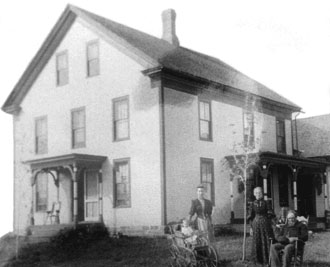
Major Dimick House as it looked in the 19th Century
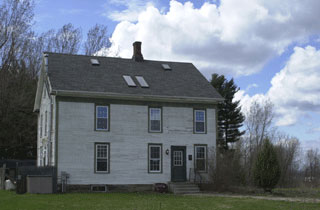
Major Dimick House in 2005
Dimick's daughter remembered "more than one occasion" when an escaped slave was concealed in the cellar—sometimes for a few hours, sometimes for a day or more. She remembered one fugitive in particular—"a man of stalwart physique" who "still bore the marks of a terrible whipping that he had received, the welts raised by the lash showing plainly on his back." At midnight, Major Dimick would hitch his horses to a lumber wagon and drive the runaways across the border.
One time, a young child stopped at Carlos Taylor's about a mile or so from Major Dimick's. He was headed to Canada on foot. He had no guide or conductor. He begged to be put up for the night. Mr. Taylor let him stay, and, the next day, directed him on his way to Fort Covington.
For more on the First Congregational Church, see First Congregational Church of Malone website.
Fort Covington
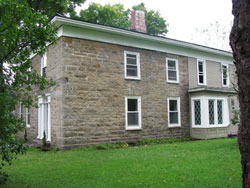
Jabez Parkhurst House
In Fort Covington, the abolitionist lawyer Jabez Parkhurst sheltered runaways in his handsome stone house about a half a mile from the border—sometimes two or three at a time. Late at night, neighbors would be awakened by the rumble of a wagon leaving for Dundee, Canada.
In his Historical Sketches of Franklin County And Its Several Towns, Frederick J. Seaver tells us that in Fort Covington, Parkhurst, Daniel Noble, and George A. Cheney, "were the three principal abolitionists of the little village, and bore the stigma of 'nigger lovers' for quite a long time." Boys "used to blacken their faces, and call at Mr. Cheney's house at night, supplicating help because they were runaway slaves...Mr. Cheney made no offer to assist ...beyond pointing out the road that led to Dundee."
For an article on the restoration of the Parkhurst House, see the Summer/Fall 2007 issue of our newsletter, The North Country Lantern.
Sources:
1852 Congregational Church building image from The One Hundredth Anniversary of the First Congregational Church, Malone, N.Y. 1807, A Souvenir.
Frederick J. Seaver, Historical Sketches of Franklin County And Its Several Towns (Albany: J.B. Lyon, 1918.
First Congregational Church, Major Dimick House and Jabez Parkhurst House, photos by Laura Sells Doyle.
Major Dimick House as it appeared in the 19th Century photo from The Underground Railroad in the Adirondack Region, courtesy of Debbie Manor.
Rev. Ashbel Parmelee image from History of Clinton & Franklin Counties, New York, Reprint edition published by the Clinton County American Revolution Bicentennial Commission, Plattsburgh, New York, 1978
Tunnel photo by Don Papson.






